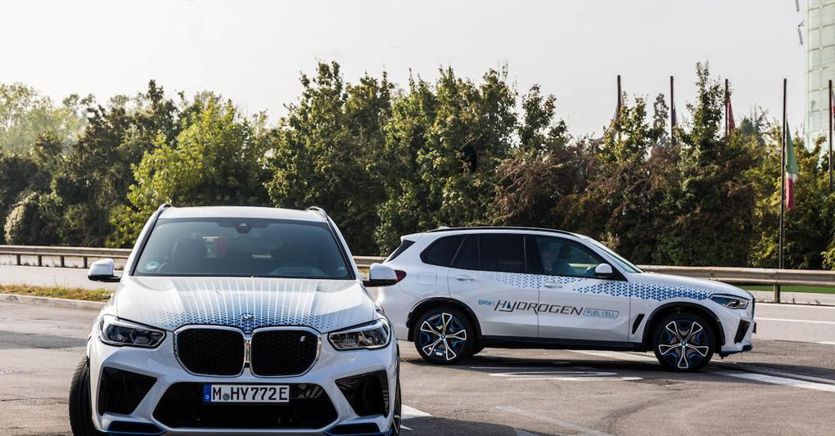Listen to the audio version of the article
Following the philosophy that electric cars are not just those that have to be plugged into a charging station to fill up, BMW takes hydrogen back into consideration for zero-emission mobility with the iX5 powered by a system based on Fuel technology Cell, or fuel cell, whatever you want to call it. With this laboratory SUV, made in a hundred examples tested in all possible conditions around the world, BMW plans to use one of the most widespread elements in nature after a stop over that lasted almost twenty years, i.e. when rather quickly and somewhat quietly, he shelved the project started with the 7 series powered by a 6-litre bi-fuel V12 capable of digesting hydrogen in liquid form. A design effort that proved difficult to develop and make usable. Now Fuel Cell technology and hydrogen in the gaseous state are pushing BMW to consider, at the moment only together with the Hyundai-Kia group and Toyota, electric traction from a different point of view than that which is based on batteries.
BMW iX5 Hydrogen, electric for long distances with fast refueling
The fuel cell SUV, as mentioned, is experimental but in reality it is the progenitor of the differently electric BMW species, which will arrive after the launch of the models based on the Neue Klasse architecture scheduled for 2025. The choice of Fuel Cell technology starts from the fact that, given the typical peculiarities of electric traction in terms of acceleration, emissions and comfort, it offers comparable autonomy, obviously depending on power and weight, but guaranteeing the possibility of carrying out hydrogen refueling in times practically equal to those of cars with combustion engines. The hydrogen stored at 700 bar on the iX5 creates the energy to power the electric motor through a chemical reaction process (redox) with oxygen, creating only water vapor as waste. Easy, but ahead there is a path hindered by the scarcity of hydrogen distributors. For example, in Italy there are only one in Bozano and one in Mestre, while throughout the world there are just over a thousand. The vast majority are in Asia, just under a third in Europe and the rest on the American continent.
BMW iX5 Hydrogen, photos of the test of the fast-charging electric car
Photogallery12 photos
View
But the situation is evolving because hydrogen will gain more ground with the contribution of the spread of commercial and heavy Fuel Cell vehicles, which will require an increase in the number of plants. In Europe it is expected that in 2030 there will be at least 600 and then there will be one within 200 kilometers of another. For the record, in Italy in 2026 there will be around forty as envisaged by the Pnrr plan. According to a German analysis, proliferation will also be driven by infrastructure costs that are lower than those of electric charging stations in percentages that will start from 20% and reach 34%, when they will become increasingly widespread. Finally, the boarding of hydroelectric cars will also be supported by the fact that, being lighter than battery-powered ones, they require the use of fewer materials, in particular the expensive and rare ones of the large “piles” of powerful and large-sized full-electric cars. .
BMW iX5 Hydrogen, how it is made and how far it goes
The mother of the future species of hydrogen BMWs is, in practice, any pre-restyling X5 both outside and inside. Everything changes under the hood because in front of us are the 125 kW Fuel Cell produced by Toyota which generates electricity, under the floor arranged in a T-shape are the two hydrogen tanks in carbon fiber reinforced plastic which contain 6 kg of hydrogen (the equivalent of 120 litres) and behind the electric motor derived from that of the iX together with the management electronics, the transmission and the 5 kWh lithium ion buffer battery, which “boosts” the performance of the system during acceleration and stores energy during slowdowns. The propulsion system which develops a total of 401 horsepower pushes this iX5 up to 185 per hour and 100 per hour in less than 6″, compared to a range of 504 kilometers in the WLTP cycle.
A journey stabilized by the insensitivity to temperature changes, in particular the cold, and which can be achieved with a full tank of hydrogen which takes 3/4 minutes, at a cost which in our country varies from 15 to 18 euros per kg. In fact, the price is determined by the on-site production with renewable sources or by transport with tank trucks to the supply plant, which can also be next to the fuel plants. In practice, at the moment, for a full tank with this iX5 you spend a little less than with a petrol or turbodiesel X5 which have 83 liter tanks.
